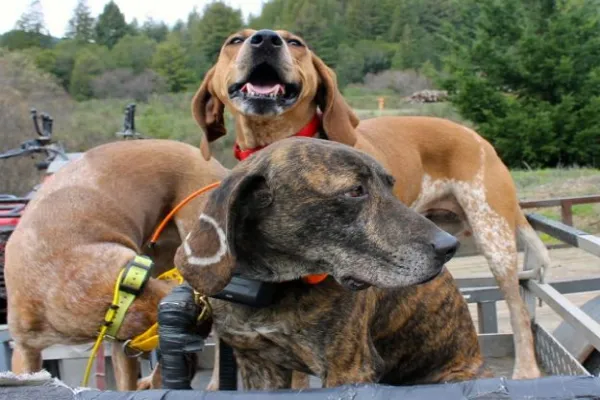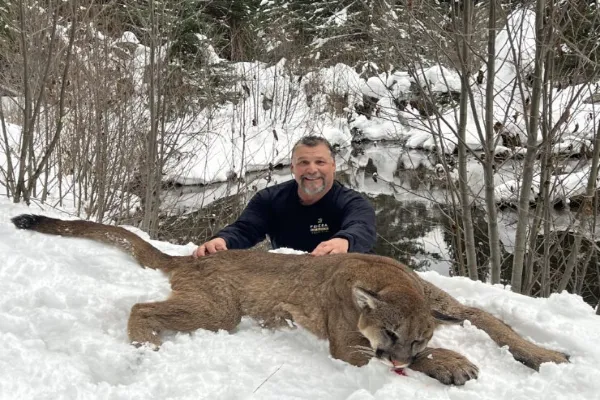The Comprehensive Guide to Mountain Lion Hunting
Mountain lion hunting, a practice deeply rooted in the history of wildlife management and conservation, is a challenging pursuit that demands extensive preparation, adherence to strict regulations, and a profound respect for the animal. Often misunderstood, ethical mountain lion hunting plays a role in population control, particularly in areas where lion populations may impact livestock or other wildlife. This guide aims to provide a comprehensive overview for those interested in understanding the nuances of this demanding sport, emphasizing responsible practices, safety, and conservation.
Understanding Regulations and Permits
Before embarking on any mountain lion hunt, the paramount step is to thoroughly understand and comply with all applicable local, state, and federal regulations. Mountain lion hunting is highly regulated, with laws varying significantly by region. Hunters must obtain the necessary permits and tags, which are often limited in number and allocated through draws or specific seasons. Key regulatory aspects include:
- Season Dates: Strict hunting seasons are enforced to manage populations and protect breeding cycles.
- Bag Limits: Limits on the number of animals that can be harvested per hunter per season are standard.
- Legal Methods: Specific methods of take (e.g., rifle, archery, muzzleloader) are often stipulated.
- Reporting Requirements: Successful hunters are typically required to report their harvest within a short timeframe, often needing to present the animal for inspection by wildlife authorities. This data is crucial for population monitoring.
- Tagging: Immediate tagging of a harvested animal is mandatory in most jurisdictions.
Failure to comply with these regulations can result in severe penalties, including fines, license revocation, and even imprisonment. It is the hunter’s responsibility to be fully informed of the laws in their chosen hunting area.
Ethics and Conservation

Ethical hunting is the cornerstone of responsible wildlife management. For mountain lions, this includes principles of fair chase, minimizing suffering, and contributing to conservation efforts. Mountain lion hunters, particularly those using hounds, often argue that their activity helps manage populations, preventing overpopulation that could lead to increased human-wildlife conflict or disease spread among lions. Funds generated from hunting licenses and tags directly contribute to wildlife research, habitat preservation, and enforcement efforts.
- Fair Chase: This principle dictates that the hunter should not have an unfair advantage over the animal. This often involves respecting the animal’s natural abilities and avoiding practices that would diminish the challenge or dignity of the hunt.
- Minimizing Suffering: Ethical hunters strive for a quick, humane kill, which requires proficiency with chosen weaponry and careful shot placement.
- Respect for the Animal: Beyond the harvest, ethical hunters demonstrate respect for the animal by utilizing its resources, whether for meat, hide, or scientific study.
Understanding Mountain Lions
Successful mountain lion hunting hinges on a deep understanding of the animal’s behavior, habitat, and signs. Mountain lions (Puma concolor) are elusive, solitary predators with vast territories. They are highly adaptable, inhabiting diverse environments from mountains to deserts.
- Habitat: Look for areas with dense cover, rocky outcrops, and abundant prey (deer, elk, small mammals).
- Behavior: Lions are primarily nocturnal or crepuscular (active at dawn and dusk), though they can be active at any time. They are ambush predators, relying on stealth and powerful bursts of speed.
- Signs: Hunters look for tracks (large, round, no claw marks visible), scat, scrapes (piles of dirt and debris), and kill sites (often covered with debris).
Hunting Methods
Two primary methods are employed for mountain lion hunting:
1. Hound Hunting
This is by far the most common and effective method, accounting for the vast majority of mountain lion harvests. It involves using trained dogs (hounds) to track a lion’s scent trail until the lion is treed or bayed (cornered on the ground).
- Tracking: Hunters and their hounds follow fresh tracks, often after a recent snowfall which makes tracking easier.
- The Chase: Once a fresh scent is picked up, the hounds pursue the lion, often for miles, until it seeks refuge in a tree or on a rocky ledge.
- The Bay/Tree: When the lion is treed or bayed, the hunter approaches cautiously, assesses the animal, and makes a decision regarding the harvest. This method allows hunters to evaluate the animal’s size and health before taking a shot, promoting selective harvesting.
2. Still Hunting/Stalking
This method is significantly more challenging and less common for mountain lions due to their elusive nature. It involves patiently moving through prime habitat, looking for fresh sign, and attempting to stalk within range of a lion. This requires exceptional tracking skills, stealth, and an intimate knowledge of the terrain.
3. Calling
While less prevalent for mountain lions compared to other predators, some hunters use distress calls (mimicking an injured animal) to lure a curious lion into range. This method requires extreme caution and awareness of surroundings.
Essential Equipment

Proper equipment is crucial for safety and success in mountain lion hunting:
- Firearms/Bows:
- Rifles: .270, .30-06, .300 Win Mag are common calibers, capable of delivering sufficient energy for a humane kill.
- Archery: Compound bows with adequate draw weight and sharp broadheads are used by experienced bowhunters.
- Optics: High-quality binoculars (10×42) and a spotting scope are essential for glassing terrain and identifying signs.
- Clothing: Layered, quiet, and durable clothing suitable for varied mountain weather. Camouflage patterns are beneficial.
- Footwear: Sturdy, waterproof, and comfortable hiking boots with good ankle support are a must for traversing rugged terrain.
- Navigation: GPS device with pre-loaded maps, compass, and physical maps are critical for navigating remote areas.
- Safety Gear: First-aid kit, emergency shelter, fire-starting tools, headlamp, and reliable communication devices (satellite phone or two-way radio) are vital.
- Hound Gear (if applicable): GPS collars for dogs, protective vests for hounds, and dog first-aid supplies.
Safety Considerations
Mountain lion hunting, like all wilderness pursuits, carries inherent risks. Safety must always be the top priority:
- Firearm Safety: Always follow the four fundamental rules of firearm safety.
- Wilderness Safety: Be prepared for extreme weather, challenging terrain, and potential encounters with other wildlife. Inform someone of your hunting plans and expected return.
- Dog Safety: If hunting with hounds, understand dog behavior, prevent fights, and be prepared for potential injuries to your dogs.
- Lion Encounters: While rare, be aware of how to react if you encounter a lion, especially one that is cornered or injured.
Field Dressing and Care
After a successful harvest, prompt and proper field dressing is essential to preserve the meat and hide. This involves gutting the animal quickly to allow the carcass to cool. The hide should be carefully removed if it is to be kept, and both meat and hide should be kept clean and cool to prevent spoilage.
Conclusion
Mountain lion hunting is a demanding and controversial activity that requires a high level of skill, patience, and dedication. For those who choose to participate, it offers a unique connection to the wilderness and an opportunity to engage directly in wildlife management. However, the responsibility that comes with hunting such a magnificent predator cannot be overstated. By adhering to strict regulations, practicing ethical hunting methods, prioritizing safety, and contributing to conservation efforts, hunters can ensure that mountain lion populations remain healthy and that the tradition of responsible hunting endures for future generations.
About the Author
Ana Milojevik is a dedicated outdoor writer and experienced big game enthusiast with a passion for predator hunting and wilderness exploration. With a deep respect for ethical hunting and wildlife conservation, Ana blends hands-on knowledge with research-driven insights to educate and inform fellow hunters.
She has covered everything from tracking techniques to gear reviews, and her writing brings clarity and depth to even the most challenging hunts—like pursuing the elusive mountain lion. When she’s not writing, Ana enjoys scouting remote terrain and learning from seasoned houndsmen across the West.